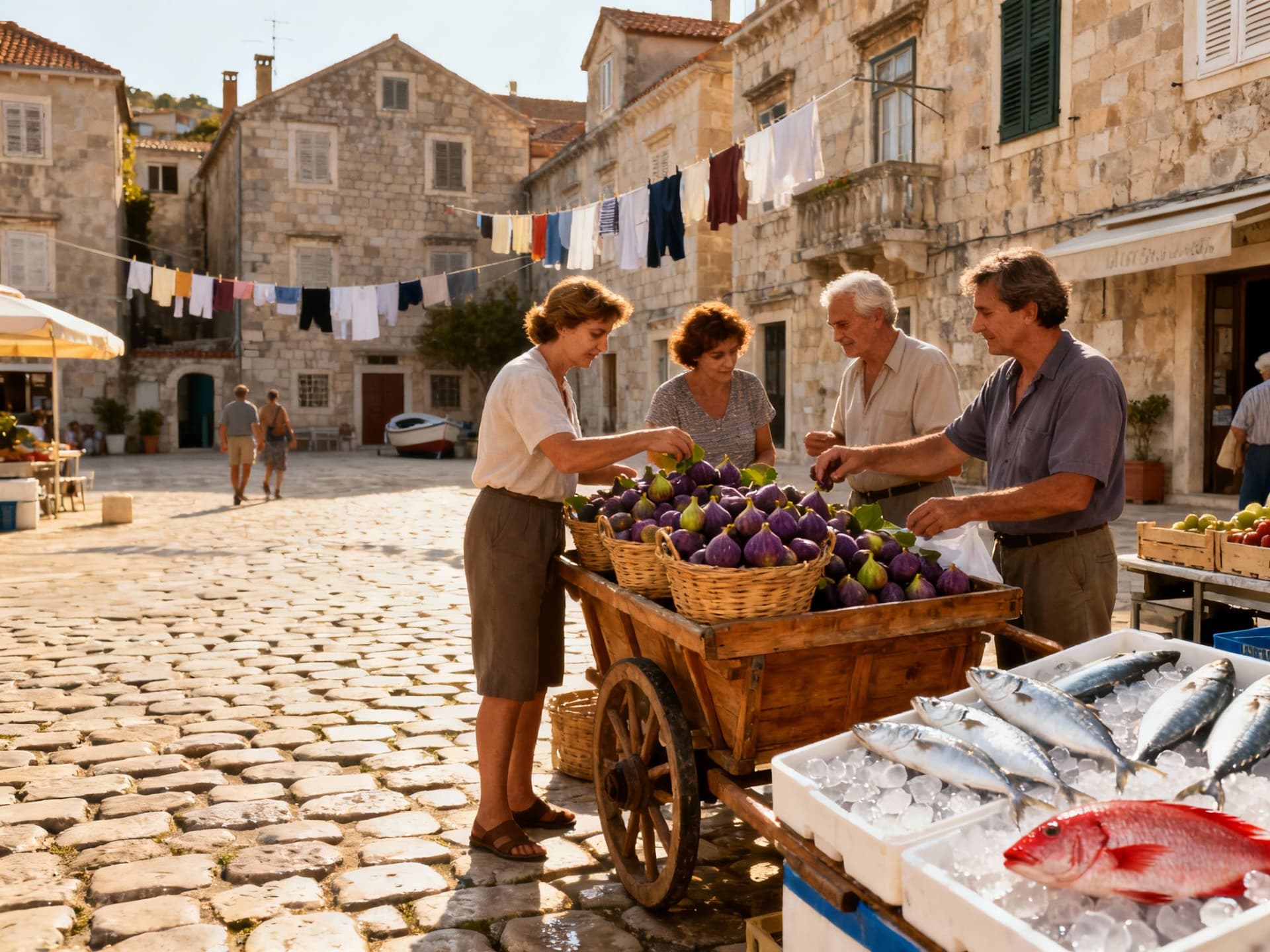Croatia: Lifestyle First, Yields Second (Test the Season)
Pair Croatia’s island-drenched lifestyle with yield-first analysis: model seasonality, prioritise year-round demand, and stress-test occupancy to convert charm into reliable returns.
Imagine walking from a sun-warmed kafić on Split’s Marmontova to a stone stair that opens onto the turquoise Adriatic — then balancing that scene with a spreadsheet of rental yields. Croatia sells a Mediterranean life: coral rooftops, island ferries, and markets overflowing with figs and fresh tuna. But for an investor the question is practical: which neighborhoods convert that romance into repeat rent and reliable capital growth? This piece pairs the sensory pull of living in Croatia with data-led signals to decide where lifestyle and returns meet.
Living Croatian Life — the sensory case for buying

Daily life in Croatia moves between a Mediterranean tempo and Central European efficiency. Mornings mean espresso and burek in Zagreb’s Cvjetni, afternoons are beachside siestas on Hvar, and evenings bring family-style konobe (taverns) where locals linger over grilled fish. Seasonal cycles are visible: island towns swell in July–August then quiet for winter; university cities like Rijeka and Žagreb maintain year-round rental demand. For buyers this means lifestyle appeal is concentrated geographically and seasonally — great for short-lets on the coast, but different metrics govern year-round yields inland.
Neighborhood spotlight: Split’s Veli Varos to Bačvice
Veli Varos (old stone houses, narrow alleys) and Bačvice (beachfront liveliness) illustrate Croatia’s micro-local contrasts within walking distance. Veli Varos attracts buyers after character properties that rent well to couples and short-term visitors seeking authenticity; Bačvice commands premiums in summer but shows sharp seasonality. Street-level cues — presence of year-round cafés, ferry links, proximity to hospitals and universities — map directly to occupancy stability and net yield assumptions.
Food, festivals and the calendar: why seasonality matters
Harvests, the summer tourist wave, and regional festivals shape demand. Events like Split’s Ultra, Dubrovnik Summer Festival, and numerous island regattas spike short-term occupancies and can lift effective nightly rates. The Croatian National Tourist Board reports sharp month-to-month visitor concentration in coastal counties, which drives high gross yields in peak months but requires conservative modelling for annualised net yields.
Making the move: practical market signals that protect returns

Dreams run on data when money is at stake. Look beyond headline prices per square metre and measure: vacancy-adjusted yields, seasonality-adjusted occupancy, and transport connectivity. Public data from the Croatian Bureau of Statistics and macro indicators from the Croatian National Bank show steady tourism inflows, but also regional variance in price growth and household incomes. Use these to stress-test assumptions: what is the realistic occupancy in November, and what is your break-even rate after taxes, utilities, and management fees?
Property types and how they perform
Stone apartments in historic cores capture premium nightly rates but need higher maintenance and heritage compliance. New-build coastal developments promise lower maintenance but may face oversupply in certain towns. Country houses inland (Istria, Zagorje) offer stability and multi-season occupancy for longer-stay tourists or remote workers. Match property type to target renter: seasonal tourists, year-round tenants, or multi-month stays, and model each with separate occupancy and rate assumptions.
Due-diligence steps that blend lifestyle and capital protection
- 1) Verify cadastral records and allowable use; 2) Assess historical monthly occupancy for the micro-location; 3) Quote local management and utilities for winter months; 4) Stress-test pricing with a 20–40% off-season discount; 5) Factor in island ferry access or seasonal road closures; 6) Confirm energy performance and renovation timelines.
Insider knowledge: what expats wish they’d known
Expats often underweight two realities: meaningful off-season drops in coastal towns, and a fast-growing urban rental market in Zagreb and university cities. Eurostat shows Croatia’s urbanisation trends and demographic shifts that favour long-term demand in cities. Many buyers also underestimate bureaucracy timelines and the value of a local agency that knows municipal rules for heritage properties and short‑let permits.
Cultural cues that change where you live
Neighborhood life is social: markets, communal buildings, and konobe create daily routines. Knowing which street hosts weekly markets, which piazza fills after church on Sundays, and where the winter cafés remain open matters for tenant retention. Language barriers are surmountable, but local relationships (a trusted notary, a reliable builder) cut months off transactions and renovation timelines.
Hidden practical tips from residents and agents
- Hire management that reports monthly with photos; prioritise properties near year-round services (clinic, supermarket); budget 5–8% pa for maintenance in stone properties; check ferry timetables if on an island; and validate wifi speeds before marketing to remote workers.
Croatia combines a life worth wanting with pockets of investable, data-supported opportunity. Target university towns for year-round rental resilience, central Dalmatian ports for mixed seasonal income, and select Istrian hill towns for steadier capital growth. Work with local agencies that provide granular occupancy histories and contractor networks. If lifestyle is the headline, use the data as the footnote: model conservatively, stress-test seasonality, and privilege service-oriented partners to turn Croatian charm into repeatable returns.
Next steps: request month-by-month occupancy and net yield scenarios from two local agencies, get a written maintenance forecast for each property older than 20 years, and compare break-even rates assuming 50% peak/50% off-peak revenue splits. Small adjustments in assumptions (management fee, winter occupancy, renovation timing) change net yields materially — run the sensitivity table before offering.
Picture this: you’re on a balcony in Rovinj at sunset, a modest net yield humming quietly in your financial model below. That’s the trade — real Croatian living paired with disciplined, data-first investment choices. If the lifestyle sells you, let the numbers protect you.
Norwegian market analyst who relocated from Oslo to Mallorca in 2016, guiding Northern buyers through regulatory risk, currency hedging, and rentability.


